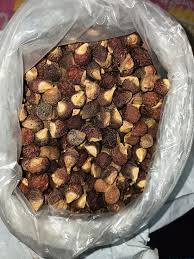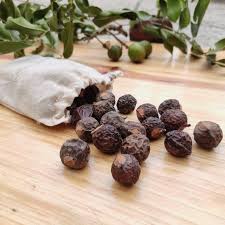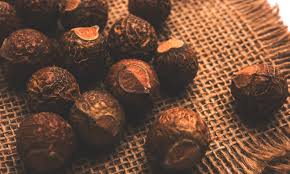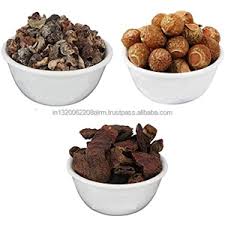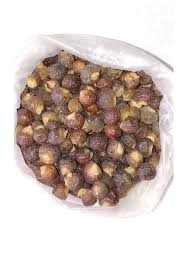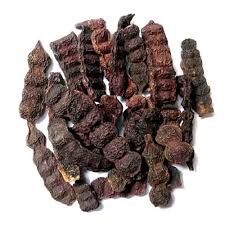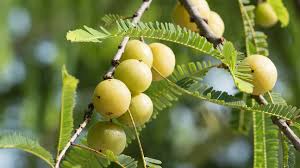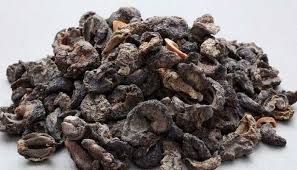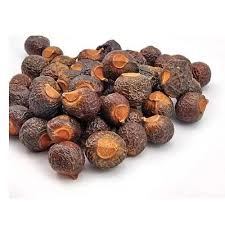Shikakai Shampoo Bars: Benefits and How to Make Them
Shikakai, often referred to as the “fruit for the hair,” has been a part of traditional hair care practices in India for centuries. Known for its natural cleansing properties, it is a gentle yet powerful herb that strengthens hair from the roots, promotes growth, and maintains scalp health. In recent years, Shikakai has found its way into various modern hair care products, including Shikakai shampoo bars — an eco-friendly, chemical-free alternative to commercial liquid shampoos. These bars are perfect for those who wish to adopt a more sustainable, natural, and effective approach to hair care.
This article explores the benefits of Shikakai shampoo bars, why they are better than many store-bought shampoos, and how you can make them at home with simple, natural ingredients. Whether you are dealing with hair fall, dryness, or scalp irritation, this guide will help you incorporate Shikakai shampoo bars into your daily routine for healthy, shiny, and strong hair.
Long Description
- Understanding Shikakai and Its Hair Care Legacy
Shikakai (Acacia concinna) has been a staple in Ayurvedic hair care for generations. It is rich in saponins, which act as natural cleansers, removing dirt and excess oil without stripping away the hair’s natural moisture. This makes it a perfect choice for those with sensitive scalps or dry hair. In traditional Indian households, Shikakai was often used along with other herbs like Amla (Indian Gooseberry) and Reetha (Soapnut) to make a natural hair wash.
The concept of Shikakai shampoo bars takes this ancient wisdom and adapts it into a convenient, travel-friendly, and sustainable format. Unlike liquid shampoos, shampoo bars are concentrated, require no plastic packaging, and are free from synthetic sulfates and parabens.
- Benefits of Shikakai Shampoo Bars
2.1. Gentle, Sulfate-Free Cleansing
One of the key benefits of Shikakai shampoo bars is their ability to cleanse hair without the harshness of chemical detergents. Many commercial shampoos contain sulfates, which can strip the hair of its natural oils, leading to dryness and damage. Shikakai, on the other hand, maintains the scalp’s natural pH balance.
2.2. Promotes Hair Growth
Shikakai is rich in vitamins C and D, along with antioxidants that nourish hair follicles. When used regularly, it strengthens the roots and promotes healthy hair growth.
2.3. Prevents Dandruff and Scalp Infections
Thanks to its antifungal and antibacterial properties, Shikakai helps in preventing dandruff, itching, and scalp infections.
2.4. Eco-Friendly and Sustainable
Shampoo bars require no plastic bottles, making them a great choice for environmentally conscious users. They are biodegradable and have a much smaller carbon footprint compared to bottled shampoos.
2.5. Long-Lasting and Travel-Friendly
Shikakai shampoo bars are concentrated, so they last longer than liquid shampoos. They are also solid, making them easy to carry while traveling without worrying about spillage.
- Ingredients You Can Use to Make Shikakai Shampoo Bars
To make an effective Shikakai shampoo bar, you will need a combination of cleansing agents, nourishing oils, and natural additives.
Core Ingredients:
Shikakai Powder – The main cleansing and nourishing agent.
Reetha Powder (Soapnut) – Adds extra cleansing power.
Amla Powder – Provides vitamin C and boosts hair shine.
Coconut Oil – Deeply moisturizes hair and prevents protein loss.
Castor Oil – Encourages hair growth and adds volume.
Shea Butter – Conditions hair and adds softness.
Essential Oils (e.g., lavender, rosemary, or tea tree) – For fragrance and additional benefits.
Optional Additives:
Aloe Vera Gel – Hydrates and soothes the scalp.
Hibiscus Powder – Strengthens hair and prevents premature greying.
Fenugreek Powder – Reduces hair fall and promotes growth.
- How to Make Shikakai Shampoo Bars at Home
Step 1: Prepare Your Ingredients
Measure all the powders (Shikakai, Reetha, Amla) in the desired quantities. For a basic recipe, you can use 3 tablespoons Shikakai, 2 tablespoons Reetha, and 2 tablespoons Amla for every 500g soap base.
Step 2: Melt the Soap Base
Use an unscented natural soap base (like glycerin or goat milk soap base). Cut it into small cubes and melt it using the double boiler method.
Step 3: Add Oils and Butters
Once the soap base is melted, add coconut oil, castor oil, and shea butter. Stir well to ensure all ingredients are evenly mixed.
Step 4: Mix in the Herbal Powders
Slowly add the Shikakai, Reetha, and Amla powders. Keep stirring to avoid lumps.
Step 5: Add Essential Oils
Once the mixture has cooled slightly (but is still pourable), add your chosen essential oils.
Step 6: Pour and Set
Pour the mixture into silicone molds. Let it set for 24–48 hours until completely solid.
Step 7: Cure the Bars
If you are making cold-process shampoo bars, allow them to cure for 4–6 weeks for best results.
- How to Use Shikakai Shampoo Bars
Wet your hair thoroughly.
Rub the shampoo bar directly onto the scalp or lather it between your hands.
Massage the scalp gently for 2–3 minutes.
Rinse thoroughly with water.
Follow with a natural conditioner or herbal rinse (e.g., diluted apple cider vinegar or hibiscus tea).
- Tips for Best Results
Store the shampoo bar in a dry, well-drained soap dish to extend its life.
If you have very oily hair, use the bar more frequently; for dry hair, limit washing to 2–3 times a week.
Pair with natural conditioners like aloe vera gel or hibiscus hair masks for enhanced softness.
- Why Choose Homemade Shikakai Shampoo Bars Over Store-Bought Ones
While some commercial “herbal” shampoos claim to contain Shikakai, they often include synthetic fragrances, preservatives, and foaming agents. Homemade shampoo bars are 100% natural, customizable, and free from harmful chemicals.
Making your own bars also allows you to experiment with different ingredients and tailor them to your specific hair needs. For instance, adding hibiscus powder can enhance shine, while fenugreek helps with hair fall control.
- Conclusion
Shikakai shampoo bars combine the best of traditional Ayurvedic hair care with modern sustainability practices. They are gentle, effective, and environmentally friendly, making them a perfect choice for those looking to nourish their hair naturally. By learning how to make them at home, you not only save money but also ensure that your hair care products are free from harmful chemicals.


